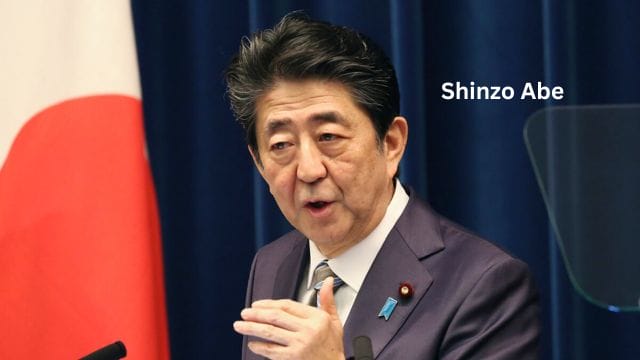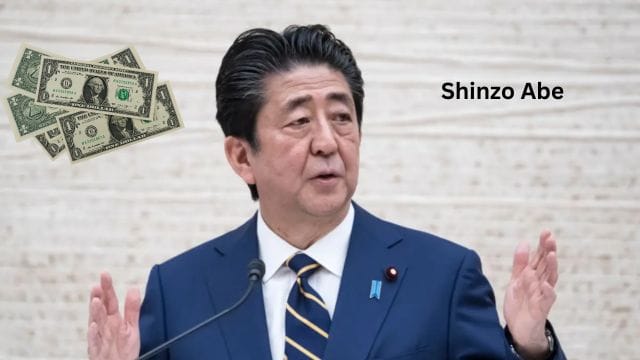Shinzo Abe Net Worth: How Much Has the Former Japanese Prime Minister Accumulated?
Shinzo Abe Net Worth: Shinzo Abe is Japan’s longest-serving former Prime Minister, having led the nation for two mandates. During the concluding ceremony of the 2016 Olympic Games in Rio de Janeiro, he donned a Mario Bros costume and was entrusted with the organization of the event in the nation’s capital.
Shinzo Abe’s Net Worth
According to various sources, including ThePersonage.com and HighIncomeSource.com, his wealth is estimated to be around $10 million, with the majority of his wealth coming from his income from his public posts.
Abe was elected to his second term, which began in 2012, due to his ability to lead the national economy, which had suffered under previous administrations, and to implement “Abenomics” public administration policies.
Shinzo Abe Early Life
Shinzo Abe was born in Tokyo, Japan on September 21, 1954, to a prominent political family. His grandfather, Nobusuke Kishi, was a prominent bureaucrat in occupied China before serving as Japan’s prime minister from 1957 to 1960. Abe has two brothers, Hironobu the elder and Nobuo the junior.
Abe attended Seikei Elementary School, followed by Seikei Junior and Senior High School, as a child. He attended Seikei University for his higher education and graduated in 1977 with a Bachelor of Arts in political science. From 1978 to 1979, Abe attended the University of Southern California as a visiting student.

Shinzo Abe’s Career
After graduating from USC, Abe began working for Kobe Steel. He eventually departed the company in 1982 and held various government positions, including private secretary to the chairman of the Liberal Democratic Party’s general council. Abe also served as his father’s secretary, accompanying him on numerous diplomatic missions.
You may also read:-
Congress’s House of Representatives
Following his father’s death in 1991, Abe was elected as a representative from Yamaguchi Prefecture’s first district to the House of Representatives. He assumed the position of director of the Social Affairs Division at the close of the decade.
In the ministries of prime ministers Yoshir Mori and Junichiro Koizumi, he subsequently rose to the position of chief cabinet secretary. Abe was designated secretary-general of the Liberal Democratic Party in 2003, and three years later he was elected president of the LDP.
Prime Minister, 2006-2007
Abe was appointed Japan’s prime minister in September 2006. In this role, he labored to balance the country’s budget. Abe also led controversial efforts to promote Japanese nationalism and negate the country’s use of coercion to force women into sexual servitude during World War II.
In foreign affairs, he endeavoured to strengthen Japan’s ties with India, China, and Southeast Asian nations. Additionally, Abe worked to legalize Japan’s military forces.

Toshikatsu Matsuoka, the agricultural minister in Abe’s ministry, committed suicide prior to the July 2007 election following a series of funding scandals.
The Liberal Democratic Party lost control for the first time since the 1950s due to numerous other defeats. The newly appointed agricultural minister, Takehiko Endo, resigned due to a financial scandal after only seven days on the job. Abe proclaimed his resignation as prime minister subsequently. He later revealed that his ulcerative colitis was also a factor in his decision.
Read More – Know Myke Towers Net Worth Here!![]()
Prime Minister, 2012-2020
In 2012, following the resignation of Liberal Democratic Party president Sadakazu Tanigaki, Abe was reelected as LDP president. He became the first Japanese prime minister to serve two separate terms since Shigeru Yoshida more than six decades prior. Abe was reelected in both 2014 and 2017, making him Japan’s longest-serving prime minister.
In his second term as prime minister, Abe attempted to remedy Japan’s economic stagnation with his “Abenomics” policy, which yielded conflicting results.
In addition, he assisted in reinstating the Trans-Pacific Partnership as a means of liberalizing various economic sectors in Japan.
In addition to his other domestic policies, Abe redoubled his efforts to downplay the atrocities Japan committed during World War II by omitting crucial information from school curricula. In foreign affairs, he worked to strengthen Japan’s ties with NATO, the EU, and other non-Asian organizations.
During Abe’s tenure as prime minister, enormous efforts were made to expand the Japanese military. Abe attempted to reform the Japan Self-Defense Forces by amending the section of the constitution prohibiting war declarations. In 2015, he enacted military reforms that allowed Japan to utilize collective security by permitting overseas deployments of the JSDF.
This controversial policy was met with public opposition and widespread demonstrations. In 2018, Abe was implicated in a favouritism controversy, and his reputation was further damaged when he was spotted partying with the LDP during the height of flooding in western Japan.
He initiated a trade conflict with South Korea in 2019 and fought with the country over war reparations. Abe resigned as prime minister in the summer of 2020 due to colitis-related health complications.



Comments are closed.